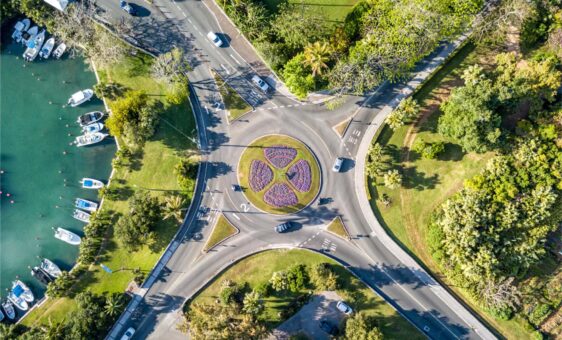First Published in The Royal Gazette, Legally Speaking, June 2018
An encroachment is the movement of a boundary beyond its legally proper position.

Typically, it is a shock to many Bermudian homeowners that encroachments cannot always be satisfactorily corrected informally between neighbours.
Encroachments can occur, and require correcting, due to historically less accurate surveying devices, intentional or natural movement of a boundary feature, or because of a previous informal agreement between neighbours.
Frustratingly, encroachments are often overlooked until a vendor and purchaser have entered into a sale and purchase agreement. For this reason, professionals recommend that vendors have their lot staked out with a new lot plan produced prior to listing. That way, any encroachment discovered can be corrected, likely well before a sale is due to close.
If an encroachment is only discovered just prior to closing, there may be insufficient time to obtain a planning subdivision by the contractual closing date and the sale could fail, or be delayed by several weeks and possibly with a price reduction.
Should the encroachment be of a small area of little value, parties will often overlook the issue, possibly intending to rectify matters later. However, if the encroachment is for a larger area and perhaps involves a building, or right of way, it is important to formally rectify matters.
A formal subdivision planning consent issued by the Planning Department is required as informal agreements or transfers intended for 21 years or more are void under the Development and Planning Act 1974. This is important to note, as a property is typically a most valuable asset and the valuation is linked to a good and marketable title for a purchaser, or bank (when mortgage financing is involved).
A formal subdivision of land issued by planning is required in Bermuda in the following cases:
Subdividing an existing lot to create two or more smaller lots with a view to subsequently transferring ownership of the lots.
Formalising a boundary encroachment indefinitely.
Granting or releasing a right of way for 21 years or more (often called an easement).
Planning requirements are typically anticipated for subdivision of larger portions of land and approval is typically obtained in good time before any transfer or grant is required.
The focus of today’s column is rectification of boundary encroachments.
The first step towards rectifying an encroachment is a formal boundary survey and preparation of a new deed plan, showing the subdivision particulars, by a qualified surveyor. Surveying fees will be incurred.
The new deed plan is then submitted to planning with a formal application, together with government fees. The application goes before the Development Applications Board and if approved is formally registered and signed off by Government.
Typically, the surveying/planning process takes two to four months, dependent on the level of complexity and the quantity of land involved.
After subdivision planning consent is granted, the registered deed plan is used in the document transferring land or granting the easement. The encroachment is thus corrected and the property should be good and marketable, so restoring proper value and certainty.
Encroachments can be rectified without a planning subdivision, and with no risk of being void under the Act, if corrective arrangements are to last for less than 21 years. However, such arrangements may be unsatisfactory, as not being a permanent fix.
Docks are sometimes found to be encroaching on the Queen’s bottom — the Bermuda seabed that is vested in the Crown, i.e. Bermuda Government. Furthermore, Proclamation GN 407 of 1996 establishes an exclusive economic zone for 200 nautical miles around Bermuda. The proclamation provides that rights exercisable over exclusive economic zone waters, seabed and subsoil, as well as natural resources, are vested in the Crown.
Over time, parts of the seabed have been sold or leased by Government to dock owners. Government policy is to no longer sell seabed; instead, a lease is offered (avoiding need for planning consent) in exchange for a one-time payment.
Additionally, some dock owners have acquired seabed ownership by adverse possession. It is possible to claim adverse possession of seabed, based on a dock having existed for a period of at least 60 years, without objection from Government. Such may be demonstrated, for example, by old photographs, by old plans or by affidavits. A successful adverse possession claim allows ownership of seabed, on which a dock is constructed, without payment to Government.
If purchasing waterfront property including a dock, it is wise to ensure that seabed ownership is regulated and the appropriate conveyance or lease from Government is included with the title deeds. If ownership is unregulated, ensure that the vendor is contracted to:
Obtain appropriate approval from Government prior to closing, or;
Allow for enough funds to be “held back” to cover the costs associated with a government application and the grant of a 21-year lease.
Conversely, a vendor’s net proceeds can be reduced, by the not insignificant amount required, to regularise seabed encroachment.
The moral of the story is to check your boundaries, and ensure that any discovered encroachments are regularised, well before attempting to sell or mortgage your property.

















